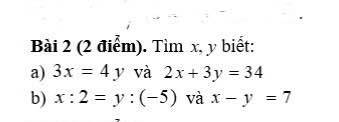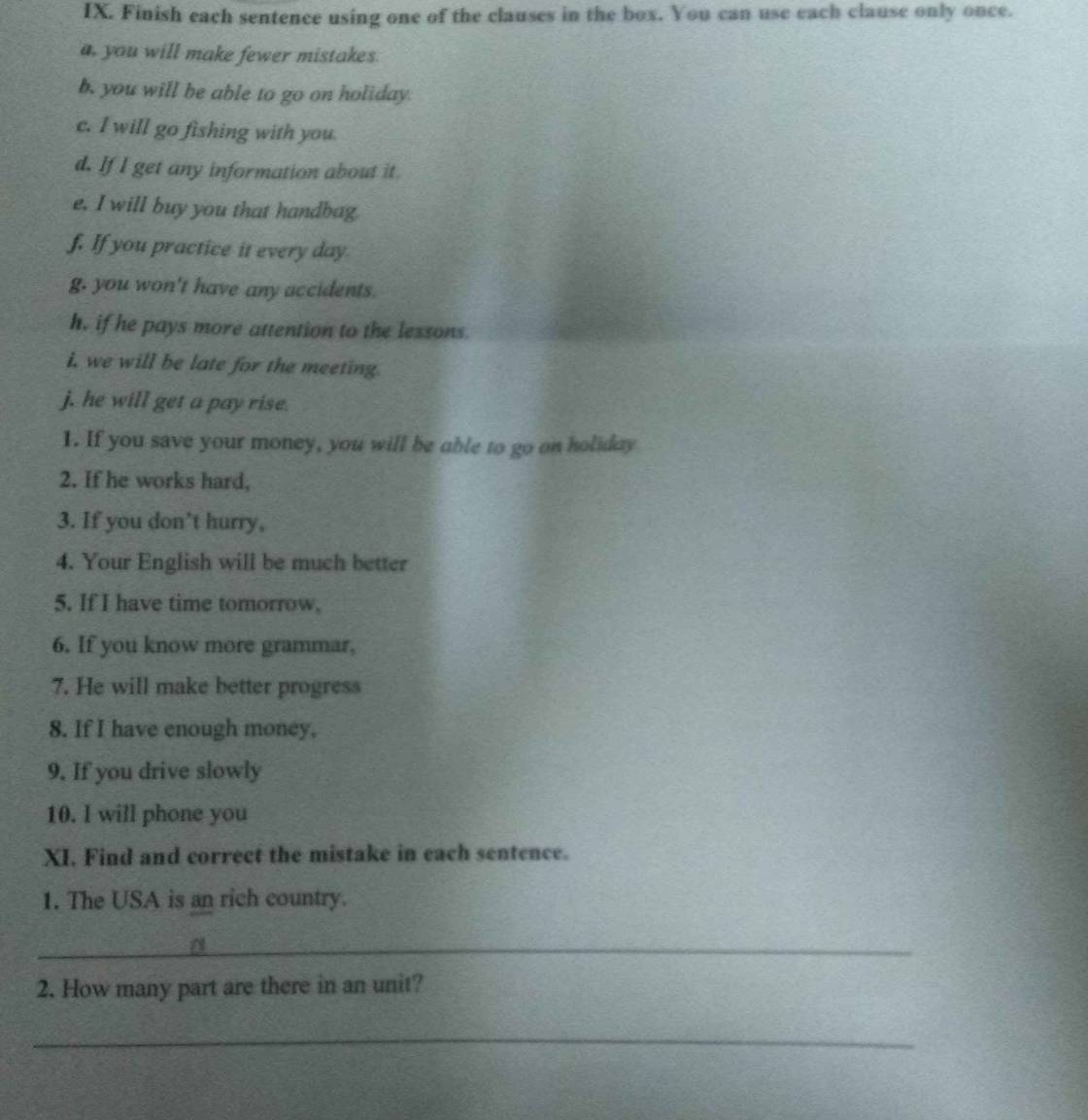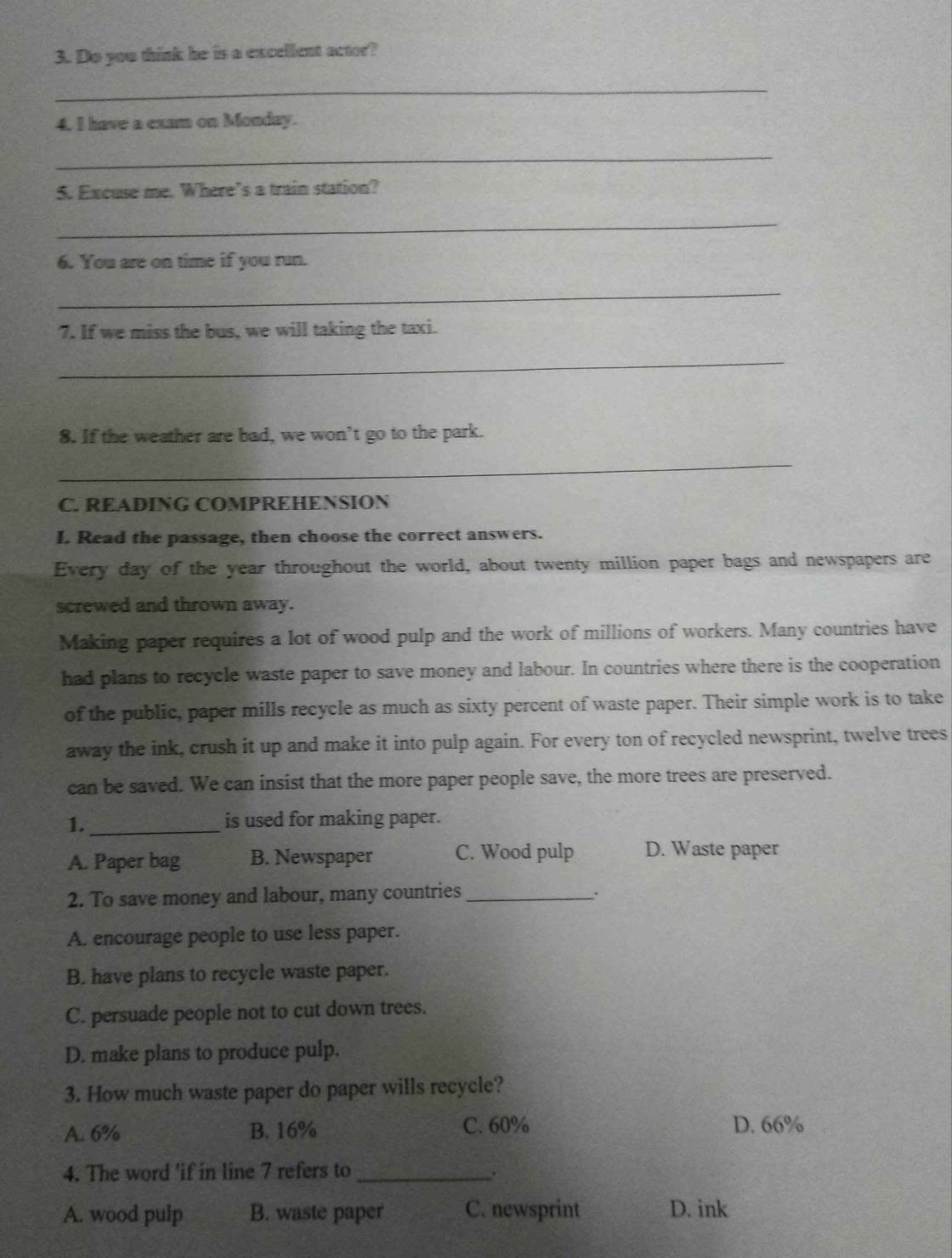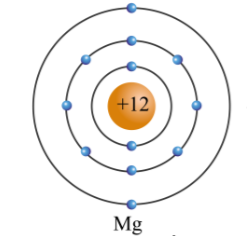 Mng giải giúp mik
Mng giải giúp mik
Hãy nhập câu hỏi của bạn vào đây, nếu là tài khoản VIP, bạn sẽ được ưu tiên trả lời.


IX
2. j
3. i
4. f
5. c
6. a
7. h
8. e
9. g
10. d
XI
2. part => parts
3. a => an
4. a => an
5. a => the
6. are => will be (không chắc lắm)
7. taking => take
8. are => is
C.
Bài 1
1. C
2. B
3. C
4. B
(Nên double-check trước khi chép)

Lời giải:
Theo đề ta có:
\(\text{sđc(AD)}=\frac{1}{3}\text{sđc(AB)}=\frac{1}{9}[\text{sđc(AB)+sđc(BC)+sđc(CD)}]\)
\(=\frac{1}{9}(360^0-\text{sđc(AD)})\)
\(\Rightarrow \text{sđc(AD)}=36^0\)
\(\widehat{BEC}=\frac{\text{sđc(BC)-sđc(AD)}}{2}=\frac{3\text{sđc(AD)}-\text{sđc(AD)}}{2}=\text{sđc(AD)}=36^0\)

Tổng số phần bằng nhau: 3+5=8(phần)
Bạn Hùng quyên góp: 400 000 : 8 x 5 = 250 000 (đồng)
Bạn Minh quyên góp: 400 000 : 8 x 3 = 150 000 (đồng)
Bạn Dũng quyên góp: 400 000 : 8 x 4 = 200 000 (đồng)

c) \(=\left(4x-3\right)^2-\left(9x^2-4\right)\)
\(=16x^2-24x+9-9x^2+4=7x^2-24x+13\)
d) \(=\left(x^2-3x+2\right)\left(x+3\right)-\left(x^3-5x^2\right)\)
\(=x^3+3x^2-3x^2-9x+2x+6-x^3+5x^2\)
\(=5x^2-7x+6\)
c. (4x - 3)(4x - 3) - (3x + 2)(3x - 2)
= (4x - 3)2 - (9x2 - 4)
= 16x2 - 24x + 9 - 9x2 + 4
= 16x2 - 9x2 - 24x + 9 + 4
= 7x2 - 24x + 13
d. (x - 2)(x - 1)(x + 3) - x2(x - 5)
= (x2 - 1 - 2x + 2)(x + 3) - x2(x - 5)
= x3 + 3x2 - x - 3 - 2x2 - 6x + 2x + 6 - x3 + 5
= x3 - x3 + 3x2 - 2x2 - x - 6x + 2x + 6 + 5 - 3
= x2 - 5x + 8

a) \(\dfrac{3}{5}\times\dfrac{7}{9}+\dfrac{3}{5}\times\dfrac{2}{9}+\dfrac{-3}{5}\)
\(=\dfrac{3}{5}\times\dfrac{7}{9}+\dfrac{3}{5}\times\dfrac{2}{9}+\dfrac{3}{5}\times\left(-1\right)\)
\(=\dfrac{3}{5}\times\left(\dfrac{7}{9}+\dfrac{2}{9}-1\right)\)
\(=\dfrac{3}{5}\times\left(1-1\right)\)
\(=\dfrac{3}{5}\times0=0\)
b) \(\dfrac{2}{3}\cdot\dfrac{17}{13}-\dfrac{2}{3}\cdot\dfrac{4}{13}\)
\(=\dfrac{2}{3}\cdot\left(\dfrac{17}{13}-\dfrac{4}{13}\right)\)
\(=\dfrac{2}{3}\cdot1=\dfrac{2}{3}\)

a/\(-\dfrac{4}{3}x=\dfrac{1}{3}\)
\(x=\dfrac{1}{3}:\left(-\dfrac{4}{3}\right)\)
\(x=-\dfrac{1}{4}\)
Vậy \(x=-\dfrac{1}{4}\)
b/\(\left|x-\dfrac{1}{2}\right|=\dfrac{5}{2}\)
\(\Rightarrow\left[{}\begin{matrix}x-\dfrac{1}{2}=\dfrac{5}{2}\\x-\dfrac{1}{2}=-\dfrac{5}{2}\end{matrix}\right.\)
\(\Rightarrow\left[{}\begin{matrix}x=3\\x=-2\end{matrix}\right.\)
Vậy \(x\in\left\{3;-2\right\}\)
\(a.-\dfrac{4}{3}x=\dfrac{1}{3}\)
\(\Leftrightarrow x=\dfrac{\dfrac{1}{3}}{\dfrac{-4}{3}}\)
\(\Leftrightarrow x=-\dfrac{1}{4}\)
Vậy \(x=-\dfrac{1}{4}\)
b)
\(\left|x-\dfrac{1}{2}\right|=\dfrac{5}{2}\)
\(\Leftrightarrow\left[{}\begin{matrix}x-\dfrac{1}{2}=\dfrac{5}{2}\\x-\dfrac{1}{2}=-\dfrac{5}{2}\end{matrix}\right.\)
\(\Leftrightarrow\left[{}\begin{matrix}x=\dfrac{6}{2}=3\\x=-\dfrac{4}{2}=-2\end{matrix}\right.\)
Vậy \(x\in\left\{-2;3\right\}\)












`a,` Ta có : `3x=4y=>x/4=y/3`
Lại có : `x/4=y/3=>(2x)/8 = (3y)/9` và `2x+3y=34`
Áp dụng t/c dãy tỉ số bằng nhau ta có :
`(2x)/8 = (3y)/9 = (2x+3y)/(8+9)= 34/17=2`
`=> x/4=2=>x=2*4=8`
`=>y/3=2=>y=2*3=6`
`b,` Ta có : `x:2=y:(-5)=>x/2=y/(-5)` và `x-y=7`
Áp dụng t/c dãy tỉ số bằng nhau ta có :
`x/2=y/(-5)=(x-y)/(2+5)=7/7=1`
`=>x/2=1=>x=1*2=2`
`=>y/(-5)=1=>y=1*(-5)=-5`
`@ Kidd`